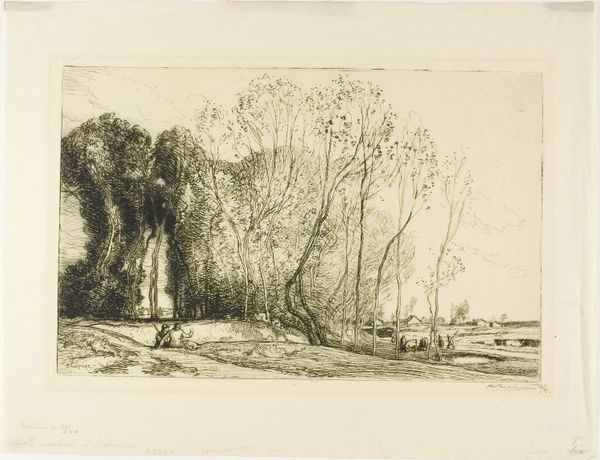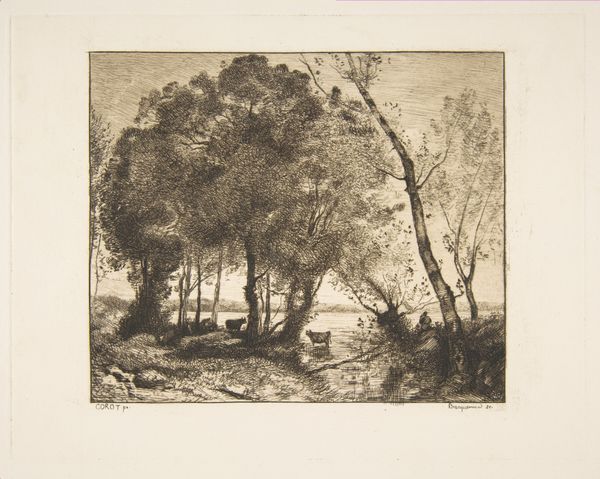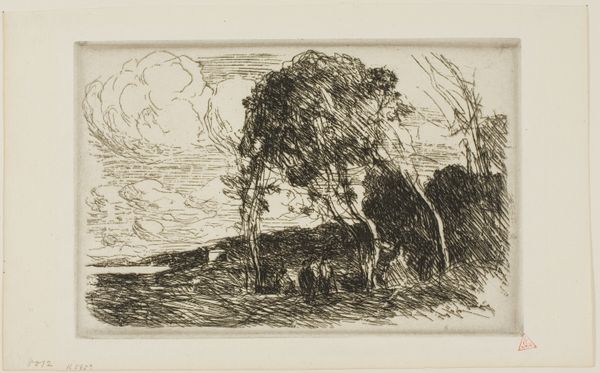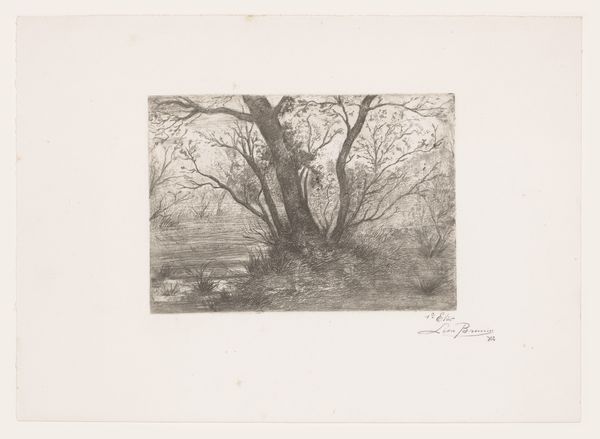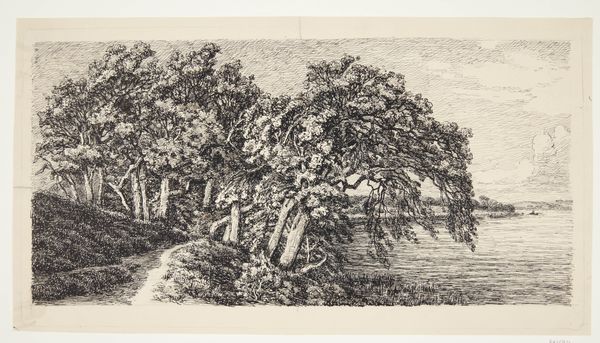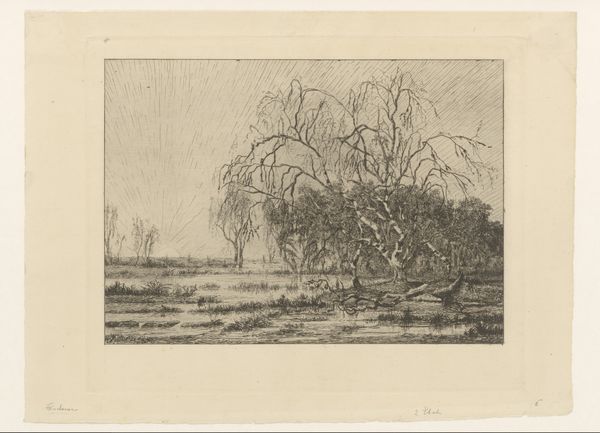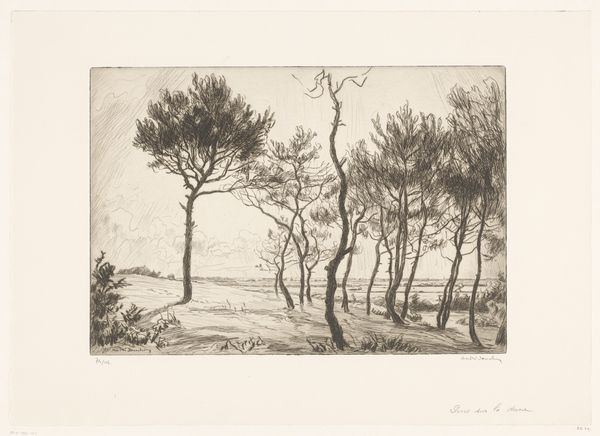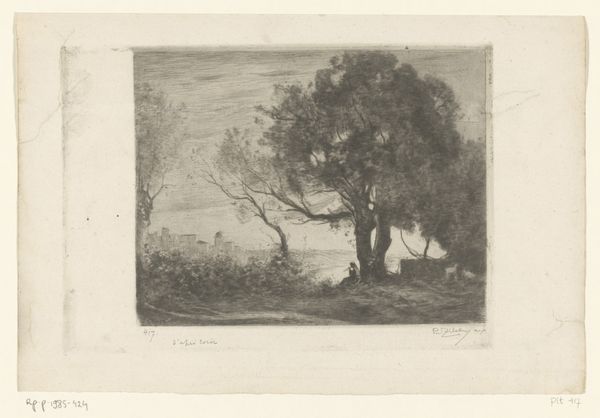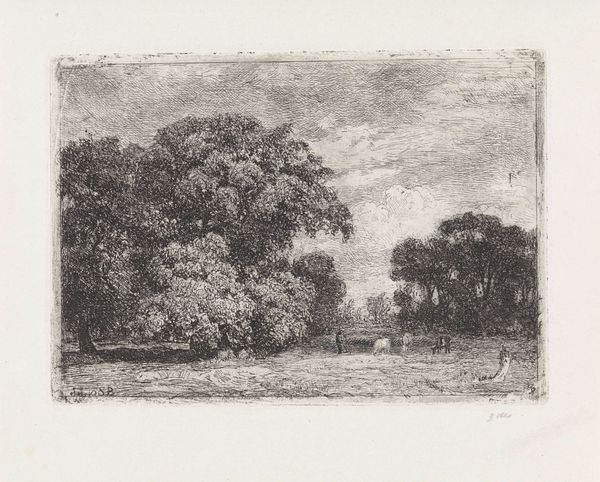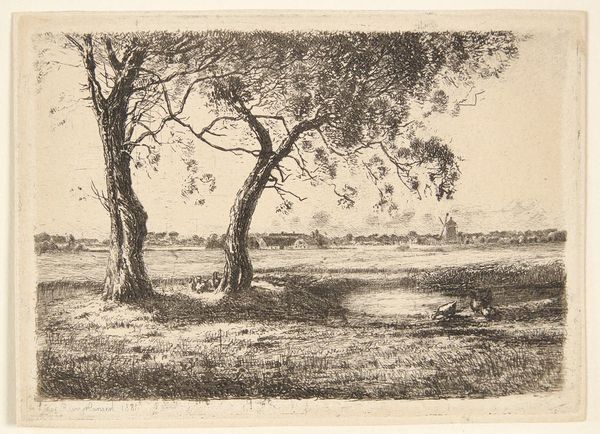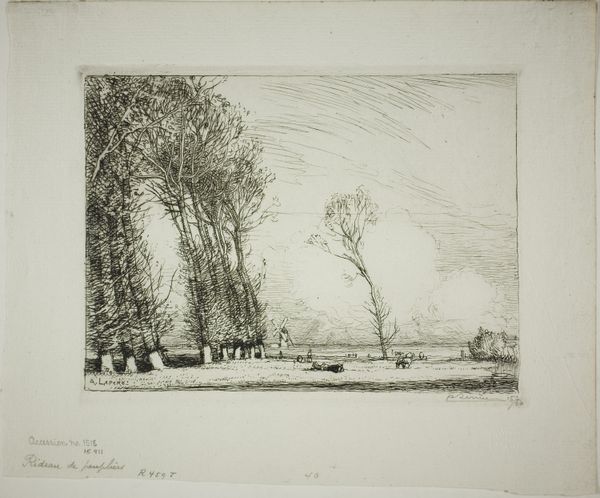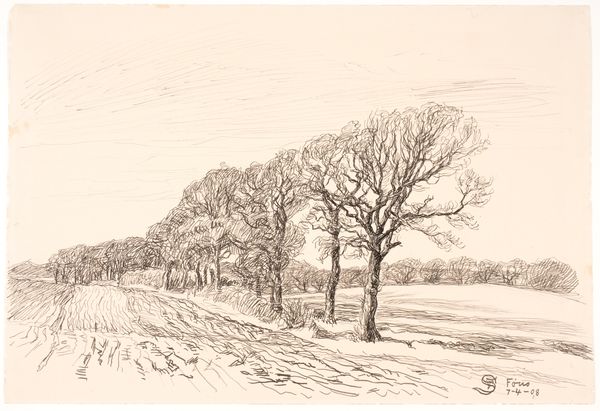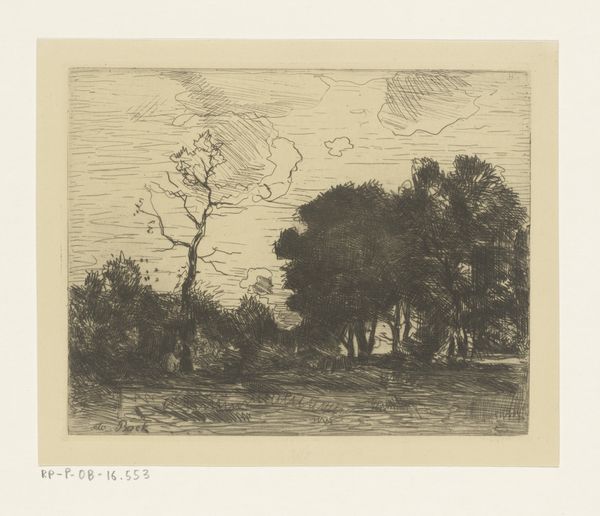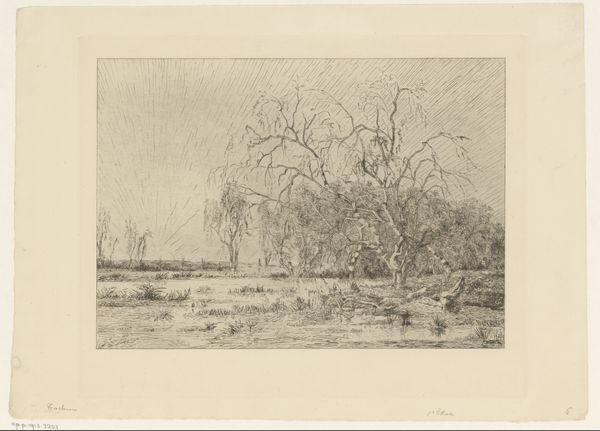
Dimensions: 297 × 359 mm (image/plate); 373 × 444 mm (sheet)
Copyright: Public Domain
Editor: Here we have Auguste-Louis Lepère's "Farm with Dutch Poplars," an etching from 1914. The composition strikes me with its almost photographic attention to light and shadow. What visual elements stand out to you in this piece? Curator: Immediately, I am drawn to the density of the lines. Lepère manipulates etching to create a remarkable range of tonal values, does he not? Note the contrast between the dense hatching suggesting shadow and the comparatively spare lines delineating areas of light. The effect is an almost tactile representation of form. Editor: Yes, I notice that too! It is also interesting how, despite being black and white, there’s a feeling of atmosphere and even a sense of color implied. What contributes to that, do you think? Curator: Observe the artist’s acute rendering of the tree foliage. Each leaf, it seems, has been carefully considered. This granular approach invites a closer viewing and yields a sensation of fullness and vibrancy, something more than monochrome. Furthermore, the use of varied line weights throughout gives a sense of depth which in turn, allows for an evocation of aerial perspective despite the monochromatic medium. Editor: So, it’s not just about depicting a landscape, but also about exploring what the etching medium can achieve in terms of light and texture? Curator: Precisely! Consider also the positioning of the farmhouse on the horizon. How does its presence inform the overall structural dynamic of the artwork, inviting your eye to wander in, not out? The house gives scale to the grove and offers both anchor and path for contemplation of surface, form, light, and the very art of the etching itself. Editor: That’s fascinating; I hadn’t thought about how the etching technique itself became a key part of the artistic statement. I now see this as much more than a landscape print. Curator: Indeed. Lepère showcases the profound visuality available within the structure of this chosen medium. This piece challenges the viewer to confront their understanding of print making and representation, one that resonates profoundly, regardless of temporal and contextual boundaries.
Comments
No comments
Be the first to comment and join the conversation on the ultimate creative platform.
